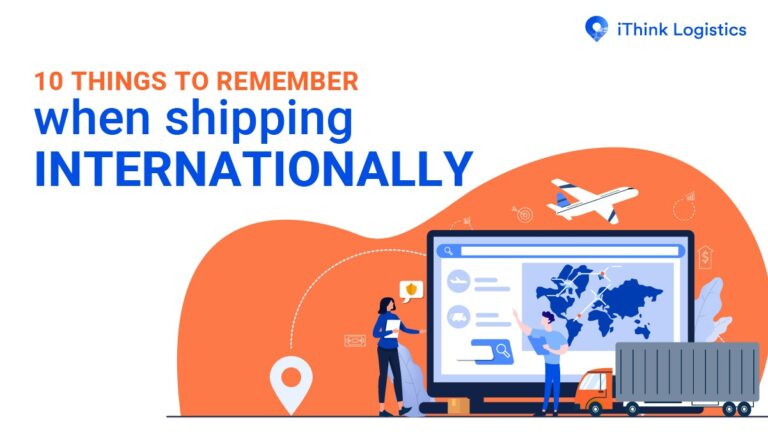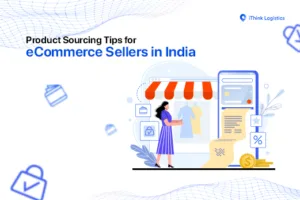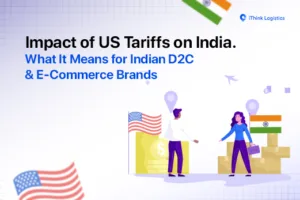The internet is also known as the world wide web where an online or e-commerce store connects you as a seller to the whole world of customers.
And today’s advancements actually make it possible for your e-commerce business to tap into this world’s every corner, country, and citizen. Thanks to international shipping.
International shipment is the magic key to take your income as an e-commerce website owner from millions to billions! In 2022, it was estimated that global e-commerce sales would reach $5.7 trillion!
And by expanding your periphery of delivering goods, you can use the power of international shipments to boom your business.
However, there are quite a few things to keep in mind before you take the radius of your business from domestic to international.
1. Country-specific Restrictions
The earth is home to 195 countries, all of which have different rules, regulations, and lists of banned products.
For example, international travelers are not allowed to bring nicotine-related products in Indian borders.
Even with a great deal at duty-free, Indian customs will simply detain the product. In the same way, it is best to check if the products listed on your website are allowed in the countries you wish to ship to before taking any steps.
2. Custom Clearance & Import Duty
With global ambitions also come global fees. And while open economy countries have made it simpler to allow foreign products in their market, import duty or additional taxes are implied on the products depending on their type and value.
Therefore, it is best to consider showing country-specific pricing of your products to the customers based on their geo-location. A product considered reasonable in India will be priced on the higher end in the USA owing to its duty.
Giving international customers a clear picture is crucial. In fact, you can also have your site ask the user to choose their location and accordingly show them your marketplace.
3. Shipping Mediums & Charges
International shipping can be done by a variety of options. Each shipping medium can be considered depending on your product and conveyed delivery time.
Different shipping processes include air freight, cargo, rail transport, and truck deliveries for countries sharing land connections. While it is a given to bubble wrap your products with care, the nature of the product will determine the favourable shipping medium.
Air freight is the fastest but the most expensive choice in most cases. Cargo involves weeks to months of sea travel making it a reasonable choice but with a long waiting period.
For eg: Products like decor and clothes can endure long hours of travel owing to their non-perishable nature which opens up the possibility of slow and cheaper cargo transport.
4. Verification of Customer Addresses
When shipping domestically, unclear addresses can be traced by asking people and even the customer themself can be contacted easily.
However, when shipping internationally, multiple language barriers and different time zones may not be able to connect you to your customer easily. Even by choosing a local delivery partner in that country, the complication can still remain.
Worst of all, the fear of being scammed is pertinent because you’re practically halfway across the globe.
Especially in terms of high-value items like antiques or designer dresses, it is best to get the address of the foreign customer verified. A local agency can also be hired for the same.
5. Transit Time
As stated earlier, air transport is the by far the fastest shipping medium. And cargo is the most reasonable one, especially when shipping to a different continent.
In a lot of countries, trucks with goods can run only within certain hours and at restricted speeds leading to a longer shipping time.
All of these facts have to be considered so that the customer doesn’t get impatient or is told beforehand about the long waiting period.
One must also keep a buffer time for delays owing to changing weather and natural calamities that will further push the delivery date.
6. Cost & Calculation of Returns
Your commercial invoice can take a big hit in case of a return after international shipping charges have already been incurred by you.
In terms of high-value products, sellers tend to adjust the cost of international shipping internally while in other cases buyers have to pay for it.
However, a return request due to a damaged product, wrong delivery, or late delivery times is likely to cost you a lot of unnecessary money and headaches.
Therefore it’s best to thoroughly vet the customer address and find a trusted third-party logistics player in the market. One must also check in what areas of the country is the customer ordering from.
In the case of remote areas, it may be difficult and expensive to deliver. However, places closer to the port or with a cargo airport make it fairly easier to deliver.
7. Packaging
Bubble wrap is the most common packaging material used. However, the nature of the product is, the duration of the transit, the size, and the international packaging rules and regulations determine the packaging you should opt for.
For eg, paper boxes may not survive the heat generated within cargo containers for months at sea. Products that leak or spill require extra layers of packaging.
It is mandatory to check what packaging is accepted by the country you are shipping to for smooth customs clearance.
8. Nature of the product – perishable/high value/fragile
As stated earlier, the nature of the product determines its journey to the customer abroad.
Transporting live plants and animals requires extensive care and more staff throughout the journey.
Transporting perishable commodities like milk require cold storage transit facilities. Moreover, perishable commodities demand a shorter transit time owing to their closer expiration dates.
9. Insurance
Insurance is the financial safety net that can save an e-commerce retailer’s profits when the products are detained by customs indefinitely or stuck in a warehouse abroad or damaged in transit.
The possibility of a natural calamity or accident is high when shipping internationally. Sudden weather changes, turbulence, storms, etc may damage the products.
There is also the possibility of the product reaching in a damaged state to the customer. In such situations, you can refund your customer and keep their loyalty while also covering your loss through insurance. Ensure that your insurance covers worldwide damage.
10. The ultimate question: Is this still profitable for me?
After calculating the cost of international shipping, customs fee, umpteen paperwork, packaging, insurance, and above all, marketing, check the impact on your profit margin.
It is important to ask yourself whether you are selling a high-value product that is giving you a profit with each unit sold or if you need to sell many products to gain a profit cumulatively.
So, to answer the question – Is this even worth it?
YES. In a world of 8 billion people, your business can reach a new destination every day.












